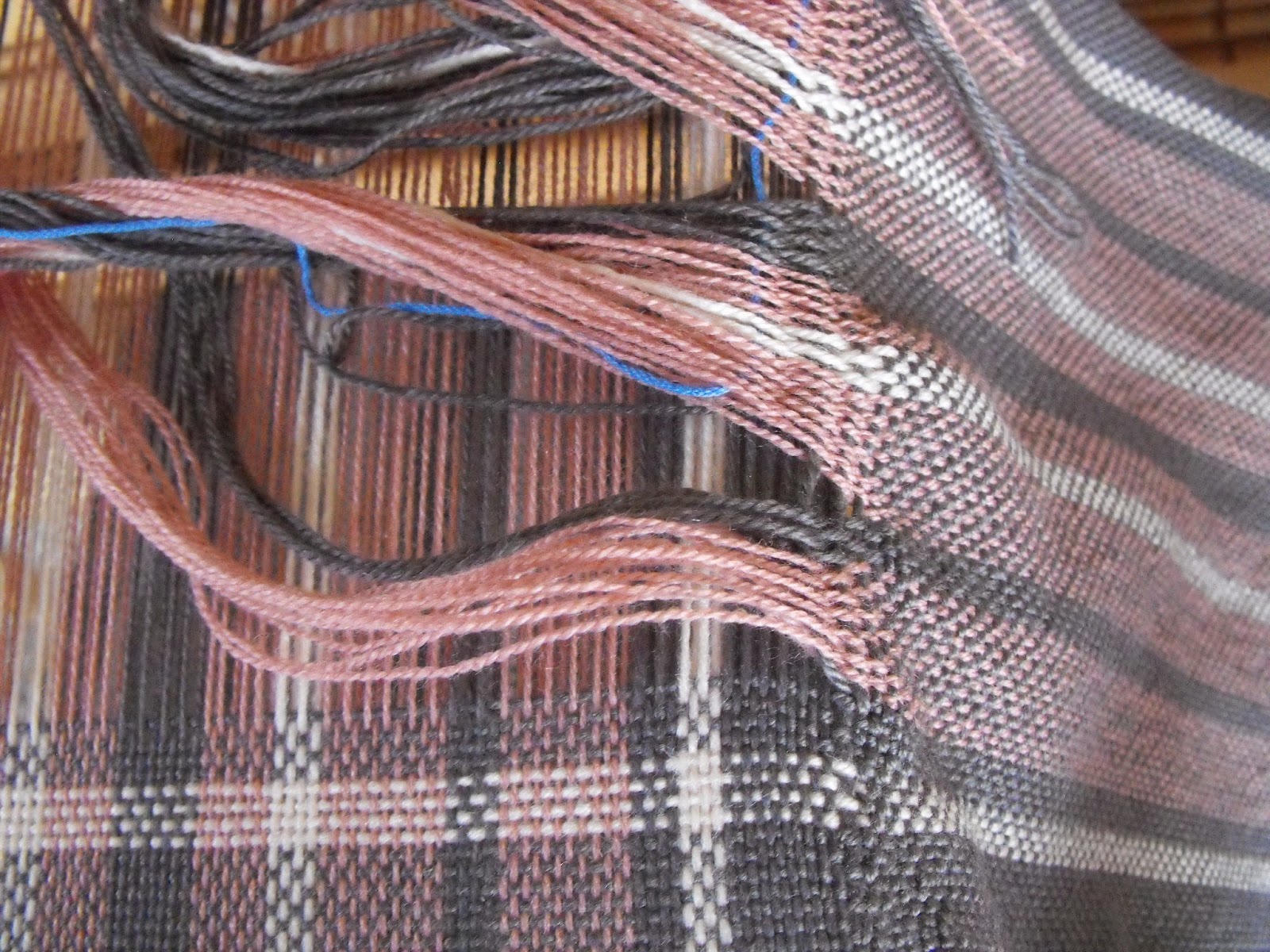This second shawl sat around for a few weeks before I finally came up
with a dye plan. The story about the weaving the two shawls can be found here on a previous post.
My idea was to use a stencil to dye a pattern onto the shawl; but ...the
problem is that we live in a small town on an island and I couldn’t source any
dye thickeners locally that would work with the Procion MX. I really didn’t want to drive three hours to Victoria or wait for an order
from the internet or take an ocean voyage to go to the mainland; so the only course of action was to find a DIY alternative on the internet.
I stumbled upon katazome which is a Japanese dye technique using
a resist paste applied to the cloth. The best part is that the resist
paste is rice flour, and that I could find! A little research later
and I found that wheat flour can also be used ...even more awesome!
So here is how I did it for the first time – no sampling/testing
just straight onto the shawl! First I
washed, dried, ironed and trimmed the threads from the shawl. I left the fringe untwisted.
I made a table long enough to hold the shawl and
the fringe. I used a piece of firm
insulation on top of some boxes to extend the sawhorse table! Then I covered it with a large piece of plastic
sheeting, like the stuff used for painting drop cloths. I made sure that there was enough overlap to wrap the dyed shawl.
The next step is to make the paste. I used ½ cup all-purpose flour and ¾ cup of
water, adding more water to get the right consistency. You want a mixture like thick cream, not too runny but not too thick.
I did a test run on the kitchen counter to make sure
that it was able to hold the shape of the stencil and it looked good!
We (Mum and me), measured out the halfway point of the
shawl, marking it with a pin. We then figured
out the placement of the stencil and found out that we would need to flip the
stencil over so that the ends would match (having the end ivy pointing down to
the edge on each side). Then it is just a matter of
glopping the paste down on the stencil and lightly pushing it around using a small offset spatula.
For the centre motif I didn't want to use the whole stencil so
I just taped off the areas I didn't need with painters tape.
The shawl had to be left overnight so that paste could dry. It was weird to see that when the paste dries it pulls and
puckers the shawl.

So the next day is dye day. The first step is to make a solution of soda
ash and water. I used 2 teaspoons of
Soda Ash with 8 cups of warm water. I
only needed about 1 cup for the shawl but we were able to use the rest of the dye to dye
some silk yarn. I sprayed the soda ash
solution all over the shawl until it was wet but not soaking. And I left it for 20 minutes, at about 10
minutes I gently pulled the shawl flat and made sure that there were no dry
spots. The soda ash is an important step
to dyeing the Procion MX as it activates and sets the dye.
Mixing the dye comes next. I choose Royal Blue in the Pale value. The recipe is ½ teaspoon of dye, 2 teaspoons
of salt, ½ teaspoon Urea and ½ cup warm water.
Mixed together the ingredients into a cup and then I poured mine into a
sprayer.
I sprayed the dye from only one side of the shawl to
make an ombré effect. I only used maybe ¼
cup of dye water, it goes along way!
When I was happy with the dye coverage we folded the plastic sheet over the shawl for the 24 hours needed for
the dye to set. While the shawl was
batching I had mild panic over how I was going to rinse the dye and get rid
of the resist paste!!
Thankfully the first and easiest method worked. I took the shawl outside and used the garden
hose to rinse off the resist paste and dye!
The flour paste easily rolled off the shawl and with the small amount of
dye used in the shawl it quickly rinsed clear.
The shawl looks amazing!
I really can’t quite believe how well the flour paste resist
worked. I already am looking at the
other shawl thinking that I’m going to dye it too!
The final photo shoot for the shop and the shawl looks
wonderful. I love the sky blue colour
and the ivy motif is so pretty. For Sale.
So that is how I do katazome dyeing – a little differently than the
traditional technique – but it worked!





























































